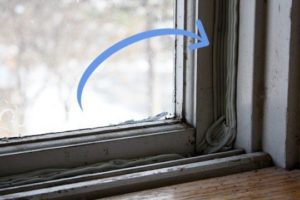How to add extra insulation for aging windows
 Insufficiently insulated windows can be a serious problem that literally sends money “out the window” in the form of excessive heating and cooling bills. The common situation such as when it is warm inside and cold outside, window panes will transfer heat by thermal conduction so additional heating is required to keep people inside the house comfortable, and a similar process is involved when it is hot outside and cool inside.
Insufficiently insulated windows can be a serious problem that literally sends money “out the window” in the form of excessive heating and cooling bills. The common situation such as when it is warm inside and cold outside, window panes will transfer heat by thermal conduction so additional heating is required to keep people inside the house comfortable, and a similar process is involved when it is hot outside and cool inside.
In the situation of trying to heat or cool the house with older windows can be a bit tricky. In addition to that, older windows also often have air leakage through window seals that crack over time worsens the problem, particularly in harsh weather.
In term of material, the old windows case, the R values (a measure of insulation, measured in “resistance” of heat passing from one place to another) are very, very low. In comparison, the walls might have an R-value of 20-40, depending on local zoning codes, how well built the house, and how much insulation was added, the windows might have an insulation value of 1 or 2. This means that the house continually losing the desired temperature, either hot or cool more through the windows. In terms of measuring energy efficiency, the R-value of a window indicates its resistance to transferring heat. So, better windows have higher R values.
Add extra insulation for aging windows
On the other side, replacing windows can be exceptionally expensive. While single pane windows transfer the most heating and cooling, even dual pane windows may be insufficient to tame high utility costs. In addition to that, one of the sign that the windows clearly losing a ton of heat is that they’re really cold in the winter to the touch, that means that they’re sucking heat out of the house.
An innovative approach to solving this problem is by adding an inner insulating window to existing windows. And this is considered as one of the easiest ways to do in this case. This can reduce heat loss by 77% or more for single-paned windows, and heating/cooling bills by up to 30%, while stopping air infiltration for further energy savings and greater comfort.
Window inserts are great products to help cut the utility bills and improve the comfort of the house. The inserts, which are an aluminum frame with weather-stripping foam around the outside, and a clear vinyl “window” in the frame. The execution is also easy to do, by pressing directly into the frame of the window, trapping an extra layer of air between your window and the insert, thereby creating a thermal barrier. The net effect is to help keep the temperature outside from becoming the temperature inside.
Adding the inner window, in fact, provides an additional layer of insulation with better insulation values than the best double pane windows. The same practice will also substantially reduce unwanted external street noise.
Two factors are vital to keeping heating and cooling costs from escalating: the window’s basic insulation value and preventing air infiltration through and around the window’s seals. In the old windows, easily adding window inserts can solve leakage.




